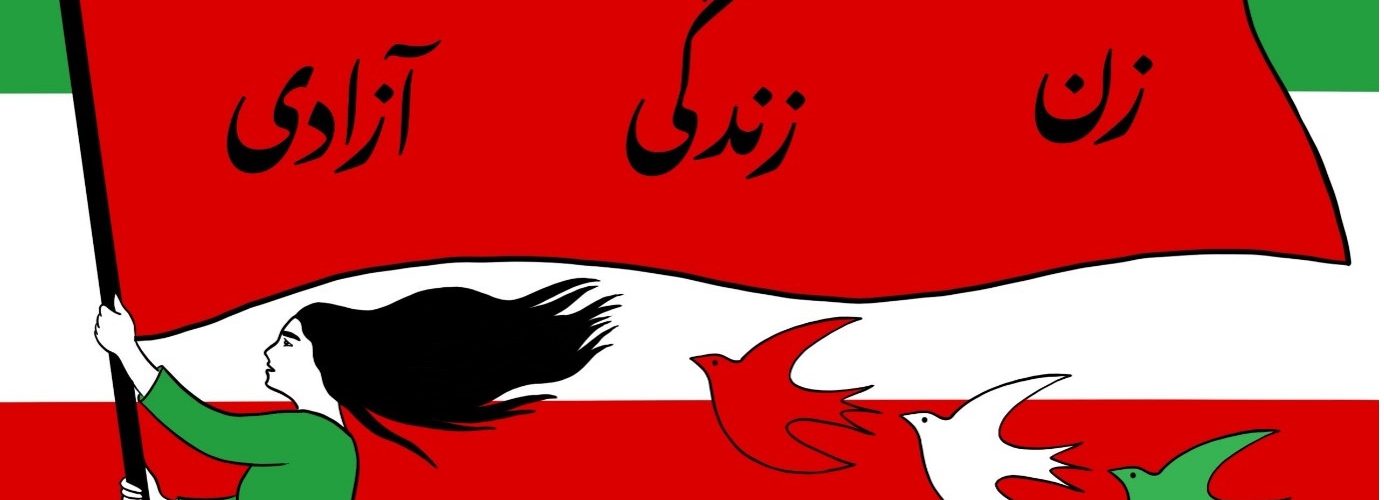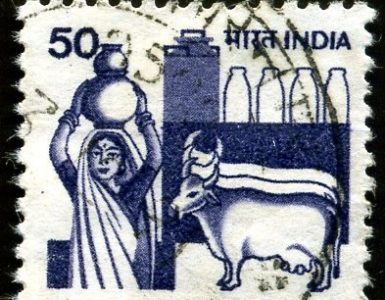Nadia Aghtaie
After the success of the 1979 Revolution, gender became a focal part of the revolutionary discourse. The State provided a perspective of ideal genders that necessitated the ‘emancipation’ of women from the Western culture and the redefinition of gender relations, which also entailed forced Islamisation and controlling of sexuality, especially women.
The gender model promoted by the State was portrayed as Islamic and, therefore, divine and non-negotiable. The ideal Islamic binary genders, specifically the ‘women question’, was located at the crossroads of almost all policy-making discussions that were soon implemented. All in all, gender as a system of inequality is now embedded in all aspects of Iranian society. In the last 44 years, those who have not performed the (hetero)normative genders in their daily lives have been somehow punished, threatened or excluded in one way or another.
This is not to say that women were entirely liberated during the previous Pahlavi era. Women, mainly those from the working class or traditional families, were very much limited in their social mobility through legal and customary restrictions. For example, women could not travel or rent a house without the permission of their male kin (Moghadam, 1999). So, you could say that a lot of the post-revolutionary policies had their origins in the past. However, after the Revolution, the State not only systematically took women’s liberty away, but also justified its actions as sanctioned by God and hence irrefutable. Some of the resulting policies have been gender segregation in many public spaces, mandatory veiling and the creation of the morality police.
Some people argue that the morality police in Iran, and the laws and policies that they enforce, such as mandatory veiling, constitute a form of violence against women, and that the operation of morality police and the way they treat women is wrongly justified using religious discourse. For example, among the most important religious obligations is the duty of Muslims ‘to promote virtue and prevent vice’ (amre beh maroof va nahye az monkar), and the State argues that this is precisely what the morality police is doing.
One of the first signs of the State’s attempt to deprive women of their liberty and normalisation of violence was through a slogan, ‘either hijab or a smack in the head’ (ya rusary ya tusari). This slogan was shouted out in the demonstration protests after the succession of the Revolution by the conservative Muslims, which explicitly vindicated the existence of the morality police.
The view that women are vulnerable to immorality, the fear of female sexuality and their power to seduce men, which resulted in the enforcement of the hijab, has been justified by high-rank clerics using the verses from sacred texts. For example, Motahhari (1979) argued that the Koran has stated that ‘say to the believing women that they should cast down their eyes, and guard their private parts and reveal not their adornment save such as is outward; and let them cast their veils over their bosoms, and not reveal their adornment‘ (Koran, 24:31).
This statement has been challenged by some Muslim feminists and women’s right advocates. They do not perceive veiling as an obligation and interpret this verse differently. They suggest that the word hijab has not been used in the Koran; therefore, there is a requirement only to cover your breast and decoration. Also, it has been argued that this Koranic verse is not exclusive to women, and it applies to men as well by guarding their eyes to preserve their honour.
Another argument made by clerics, such as the founder of the Islamic Revolution is that the hijab protects women and removes them from the level of objectification to that of respectability and therefore, it is an obligatory duty. The fact that the State has enforced mandatory veiling in female-only spaces, shows that the aim has been to make hijab an inherent part of womanhood.
One of the primary duties of the morality police has been to patrol the streets of Iran to ensure that the nation, specifically women, is adhering to the rules of modesty. It is important to note that what constitutes as modesty and appropriate clothing have not been the same throughout the last 44 years. The laws and regulations in the Revolution’s first decade were more restrictive than in the second, third and fourth decades. However, even in the latter years when the State has been more lenient, in relative terms, there have been times when the morality police have poured into the streets and have clamped down on women’s clothing and appearance in public.
For example, in September of 2022, a 22-year-old Kurdish woman, Jina (Mahsa) Amini, was killed while in the custody of the morality police. It is important to note this is not an isolated incident. Jina was not the first to be beaten by the morality police and has not indeed been the last. The existence of the morality police has meant that the Iranian State in general, and men in particular, have gained more power over women’s sexuality which has contributed to the institutionalisation of violence against women. For example, Article 630 gives a man the right to kill his adulterous wife and her lover if he catches them in the act.
The State’s interference with women’s sexuality and clothing has not been exclusive to the post-revolutionary policies. In 1936, Reza Shah Pahlavi banned the hijab as he perceived it as a sign of backwardness. As Haleh Esfandiari stated: ‘this was certainly a victory for women but a tragedy, too, because the right to choose was taken away from women, just as it was during the Islamic Republic when the veil was officially reintroduced in 1979’.
Other arguments for mandatory veiling that the Iranian State has put forward are that women’s adherence to hijab is not only a requisite for a healthy society, the prevention of sexual harassment and strengthening the institution of marriage, but it also gives women respect and value. Also, there is a view that veiling has opened various avenues for ‘some’ women and has allowed them to enter the public sphere and gain mobility, especially within the context of Iran. Mehran (2009) suggests that the gender segregation policy and ‘purifying’ the public space through gender segregation and mandatory veiling were some of the main factors in increasing enrolment in higher education after the succession of the 1979 Revolution.
A lot of traditional families who did not agree for their daughters to move away from home and study at the university during the Pahlavi era because they were afraid of exposing them to Western culture, after the Revolution, they were willing for them to obtain a university degree and enter the employment sphere. The increased literacy rates in rural areas were especially striking after 1979. It is fascinating how the Iranian government has used Islam to proclaim that education is every Muslim’s Islamic duty, using the Prophet’s sayings to support this claim and weakening the resistance to educating girls which existed, particularly in the rural areas. In contrast, we can see the opposite in Afghanistan, where women have been banned again from entering secondary and higher education after the Taliban took over in 2021.
It is noteworthy that the Iranian State endorsed girls’ education because the Islamisation of the education system in Iran would hopefully harvest generations of virtuous and devout women who would convey the culture and tradition promoted by the State to their children. Consequently, it was believed, they would resist the peripheral pressure of Western culture. The State hoped that the third generation, those born after the Revolution, would be the ideal revolutionary models as they have been nurtured and taught under the Islamic State with no residue of the Pahlavi era in them (Khosravi, 2008). However, this has not been the case.
The young generation in Iran is not what the State was hoping for. This is clearly seen in the recent uprise where women have been at the forefront of the demonstrations. Even high school and middle school pupils have been ripping off their headscarves, standing on top of police cars and shouting slogans such as ‘woman, life, freedom’, ‘death to the dictator’, and ‘justice for Iran. Also, men have stood side by side with their female counterparts from different age groups and ethnicities for the first time.
Two themes seem to emerge here: can mandatory veiling be seen as impinging on women’s liberty, and secondly, can morality police be conceptualised as a form of state-sanctioned violence? Some argue that the enforcement of veiling is a form of gender-based discrimination, as it requires specific dress codes for women that are not imposed on their male counterparts. This form of gender-based discrimination has a knock-on effect on how women are perceived by those in power and could limit their social mobility and employability, especially within public services. If a woman is perceived as deviant due to her appearance, she is likely to be discriminated against. For example, you will not be able to hold a job in places such as schools, universities, or the parliament, if you are not perceived as pious.
Also, it is argued that the imposition of veiling violates women’s freedom of expression, as it limits their ability to choose how they would like to present themselves in public spheres. There are other additional arguments, such as mandatory veiling can also limit women’s activities, especially within sports or limit their access to certain spaces. For example, if a woman is not properly veiled, she may be refused entry to certain buildings or may be subjected to harassment or abuse from members of the morality police or from other members of the community.
Overall, the laws and policies related to ‘mandatory’ veiling and other issues of moral conduct can create a climate of fear and intimidation for some women in Iran, particularly if they are perceived as not conforming to societal expectations. This can negatively impact women’s sense of safety and well-being and limit their ability to participate fully in society. Glorifying mandatory veiling through various concepts such as respect and safety and notions of women’s welfare does not hide the fact that non-compliance with mandatory veiling has entailed fines, whipping, jailed sentences and even murder.
Not everyone in Iran views the morality police or the laws and policies they enforce as a form of violence against women. Some may even see these measures as necessary for upholding cultural and religious values and as a way to protect the moral fabric of society. However, many other people do not support the enforcement of the hijab and view it as an impingement on women’s liberty. Adopting veiling should be a personal choice and not a state-mandated practice. Depriving women of making free choices and enforcing hijab is state-sanctioned violence and a form of ‘liberty crime’.
References:
Khosravi, S. (2008) Young and Defiant in Tehran. Philadelphia: University of Pennsylvania Press.
Mehran, G. (2009) Doing and Undoing Gender: Female Higher Education in the Islamic Republic of Iran, International Review of Education, 55(5): 541-559.
Moghadam, V. (1999) Gender and globalization: Female labour and women‘s mobilization, Journal of World-Systems Research, 5 (2): 301-314
Motahhari, M. (1979) Nezam-e Hoghugh-e Zan Dar Islam (The System of Women‘s Rights in Islam), Qom: Sadra Publishers.

Nadia Aghtaie Senior Lecturer in Gender and Violence, School for Policy Studies, University of Bristol. Twitter: @DrNadiaAghtaie
Header Image Credit: Roshi Rouzbehan
TO CITE THIS ARTICLE:
Aghtaie, Nadia 2023 ‘Mandatory veiling and morality police: an impingement on women’s liberty’ Discover Society: New Series 3 (1): https://doi.org/10.51428/dsoc.2023.01.0003




